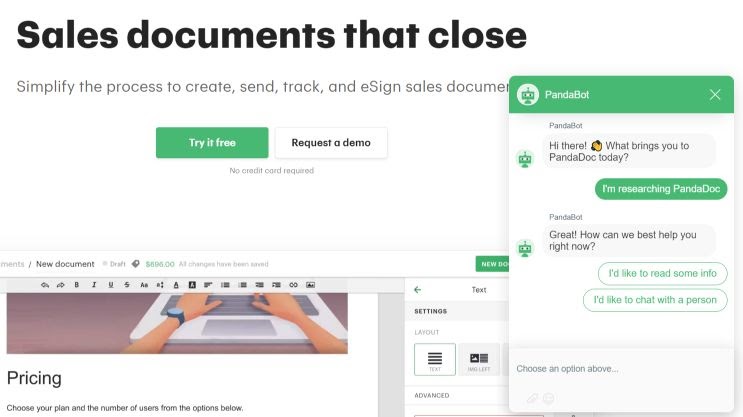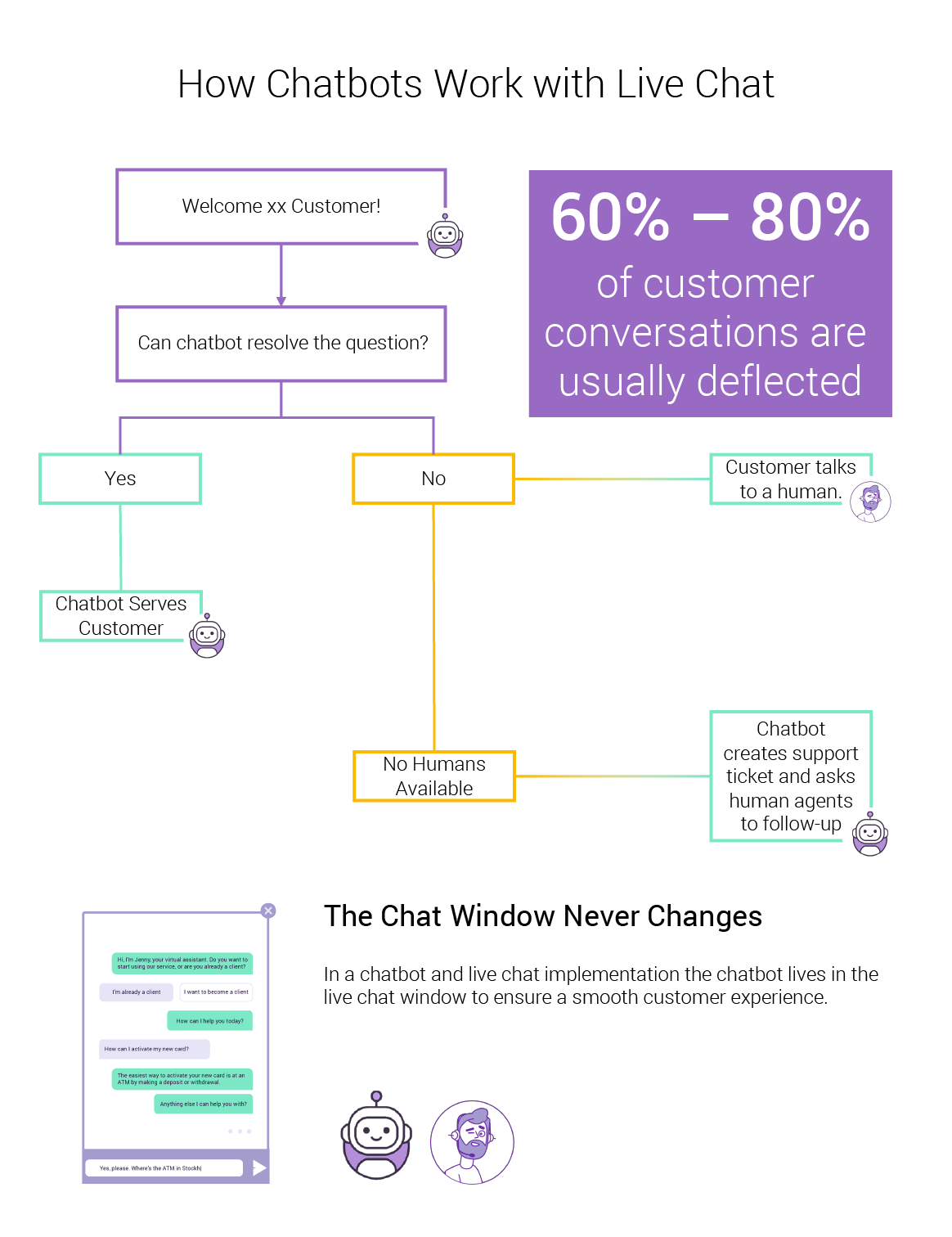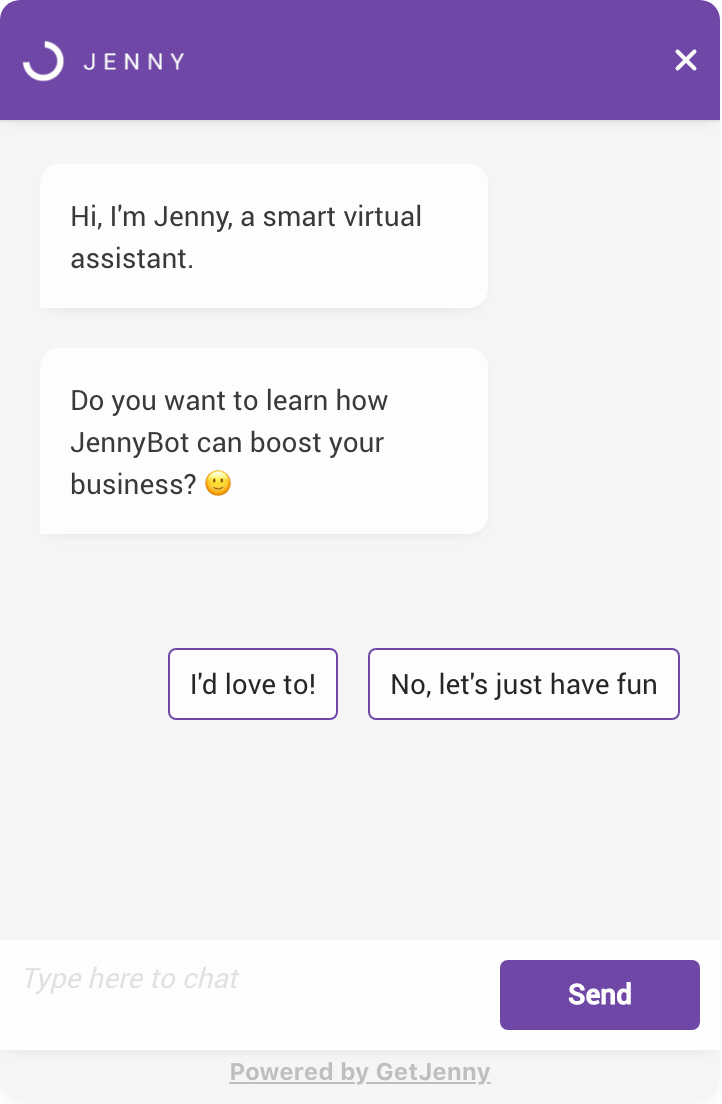by Mikko Rindell
on November 05, 2020
7 Growth Hacks to Use Chatbots for Customer Service
When people talk about growth hacking, many of us think about attracting new customers rather than tackling churn. Therefore, many businesses apply growth hacks around attracting new customers. While this is undoubtedly important, it is equally critical to manage churn and retain loyalty from existing consumers. According to Harvard Business Review, it can be five to twenty-five times more expensive to attract new customers than retaining existing ones. Reducing churn not only costs you less than new user acquisition but also provides a more sustainable growth model for your business. Many experienced growth marketers boldly stated that eliminating churn is the growth hacking 2.0.
Retaining customers is achieved by meeting their needs and ensuring that your audience remains happy. This will lead to better Customer Lifetime Value, a metric that helps a business measure anticipated revenue from any given consumer. Bringing chatbots into your customer support channels is an effective way to achieve this.
Keeping customers happy ensures that they will continue to return to your business. In the hands of a well-programmed chatbot, this opens up a range of opportunities for upsetting, cross-selling and renewal of software licensing. Achieve these goals and you will watch your business grow before your very eyes. Here are our seven growth hacks to use chatbot for customer service that will help you reduce churn and and improve your customer lifetime value in the long run :
1. Design a Trigger Point to Involve a Human in the Picture

From Pandadoc.com
The key to effective customer service is finding a rapid, effective solution to a problem or pain point. This is one of the key reasons to use chatbots. Rather than waiting for a human agent to become available to address a customer, a chatbot can provide an immediate response.
However, a chatbot cannot resolve every issue. If a customer is left repeating themselves, trapped in a loop of explanation with no solution, they will quickly grow frustrated. It should be made clear to a customer that they are conversing with a chatbot, and that the opportunity to seek human help is just a click away.
Introduce a trigger button or command to escalate to a human support agent. The chatbot will have gathered basic data about the issue and will relay this to a staff member. This saves time for the customer, who can relax in the knowledge that a solution is impending.
The best technique is combining chatbots with live customer service representatives. Open with a live chat and see if the chatbot can find a solution to a common issue. If this is not the case, allow the human representative to step back in and resolve the customer's problem.

2. Turn a Chatbot into a Friend with Personalization
While it is inadvisable to attempt to fool a customer into believing a chatbot is a human customer service representative, good manners cost nothing. Personalizing interaction with a chatbot makes it a more engaging experience for a consumer.
Program your chatbot to address a customer by name. Rather than opening a conversation with a mere, "hello", program the chatbot to say, "hello (name). I hope you are well today. How can I help you?" In addition, program your chatbot to remember preferences and purchases from previous conversations. This, again, adds a layer of personalization to the conversation.
There is no need for forced small talk. That is beyond the capabilities of most AI and will frustrate a customer that just wants an answer to a question. A little human touch will relax a service user though, improving the likelihood of retaining their business.
3. Why are You Leaving Me? Questions for Feedback when Users Unsubscribe or Quit
Not every customer will remain for life, no matter how impressive your service. Needs and circumstances change, and customers eventually move onto new pastures. It is beneficial to learn why this is, however. With the aid of a chatbot, you can change their mind.
Gather information on why customers are unsubscribing from a service. Review these responses and look for patterns. Are you no longer meeting the needs of a group of customers? Do customers feel they are not receiving value for money? Use this data to construct a reselling or upgrading strategy in the future.
Use a chatbot to pop-up at this stage, making an offer to a customer if they change their mind. A 10% discount on renewal, for example. This is not costing you anything. You were about to lose the customer and have now retained their business. Consider it a 90% saving, not a 10% loss of income.
4. Use Menu Options, Not Open-Ended Questions
Part of the charm of chatbots is their ability to hold an open-ended conversation. Menu branching, similar to that found over telephone services, is preferable for some customers. This allows your chatbot to act as a resource and information center, rapidly getting to the heart of a customer’s problem.
Have your chatbot ask questions, each of which has a segmented set of answers. Based on the response, the chatbot can then display its vast knowledge. It’s a fast and effective way of responding to queries, and you will not even need to utilize AI if you prefer not to. A button bot will be more than adequate for this task. However, AI will provide the opportunity to turn closed questions into an open-ended conversation.

5. Tailor Chatbot Menu Options According to a Customer's Plans and Packages
A chatbot provides the opportunity to upsell and cross-sell customers on potential upgrades and enhanced software packages. Tailoring menu offerings to different buyer personalities shows you understand the needs of a customer.
Ensure this is factored into the programming of a chatbot. Every customer is unique, but a personality profile can be built and FAQs tailored accordingly.
An example of this would be a chatbot responding to a customer query with, "if you're looking to complete this task, have you considered upgrading your package to this item? It will cover everything you need, and we can offer you a special price."
This educates your customer about the different ways in which their problems will be solved. This, in turn, strengthens your relationship. The customer is likelier to stick with you, and refer you to others based on your exemplary customer service.
6. Use Different Chatbot Conversations to Educate Your Customers
Chatbots are a great way to educate your customers, providing added value during a conversation. You can nurture and enhance your relationship with a consumer by providing more information than is asked for. This can be used to direct your customers toward existing resources they were not familiar with.
Program your chatbot to build a customer profile and use this data to send the consumer on an educational journey. Point them toward eBooks, podcasts and blog posts on your business website. This opens a customer’s eyes to the wide array of information you have to offer.
Use customer profiles to make tailored recommendations through a chatbot, too. Have the chatbot point out a new template or software that is relevant to the job description of the customer, or something that pertains to previous queries. If your customer is learning from their interactions with you, they will be sure to stay on your books.
7. Personalize at Every Turn
We previously discussed how a conversation, personalized approach from your chatbots sets customers at ease. Equally important is personalizing content according to a user’s geography and habits. This is known as localization.
Building upon growth hacks #2 and #5, personalization and localization creates a completely bespoke offering for your customer. This makes a service user feel like they are at the center of your universe. If the customer feels understood, they will continue to provide their business. They have no need to look elsewhere to have their needs met.
This is the key to growth. Loyalty from existing customers is up to sixteen times more profitable than attracting new users, while decreasing customer churn by 2% is equivalent to shaving 10% from your business expenses.
Key Takeaways
As you'll see, chatbots can make a significant difference to your customer churn rate. By utilizing chatbots, you can ensure that customers enjoy dealing with your business and will continue to do so. This will lead to stellar rates of organic growth within your company.
To make the most of chatbot technology, remember these golden rules.
- Chatbots are helpful, but not infallible. Always give the customer the option of human contact is desired.
- Chatbots should offer a personal touch at every turn, building a customer profile for future interactions.
- If a customer attempts to leave your service, chatbots may change their mind –
- Consider providing a branching menu, as opposed to relying upon a chatbot to understand the nuance of open-ended questions.
- Tailor these menu options according to a customer's previous purchases and conversations.
- Use chatbots to educate customers, steering them toward added value within your business umbrella.
If you'd like to learn more about how chatbots can improve the fortunes of your business, GetJenny would love to help. Schedule a personal AI chatbot demo now.
Mikko Rindell
Marketing Director
Similar articles

Chatbot Case Studies for Media and Entertainment Companies
How can media and entertainment companies keep up with customers? Learn how chatbots help service teams stay on track and serve customers better.

4 Things You Need to Know When Considering Chatbots
Ersin walks through the surprising opportunities potential chatbot customers miss in their chatbot project planning.

Must-Have AI Chatbot Features for Better Customer Experience
Are you considering an AI chatbot? This guide helps you ask the right questions to chatbot vendors about chatbot features when you compare options.


